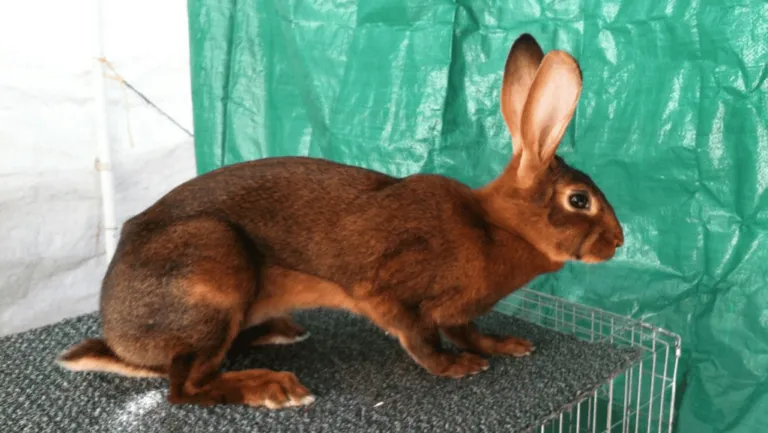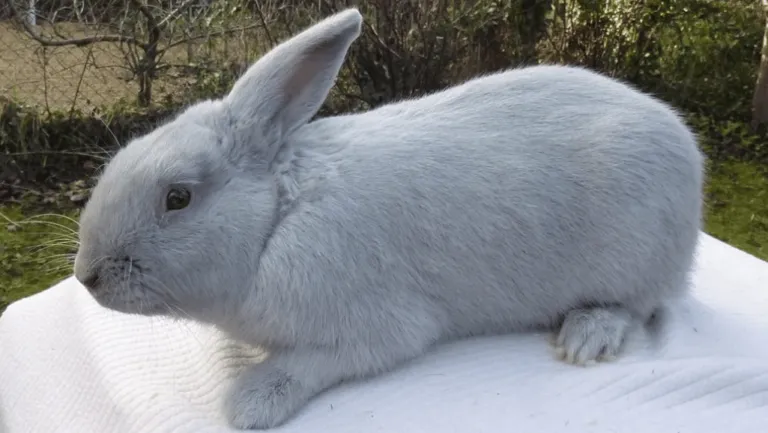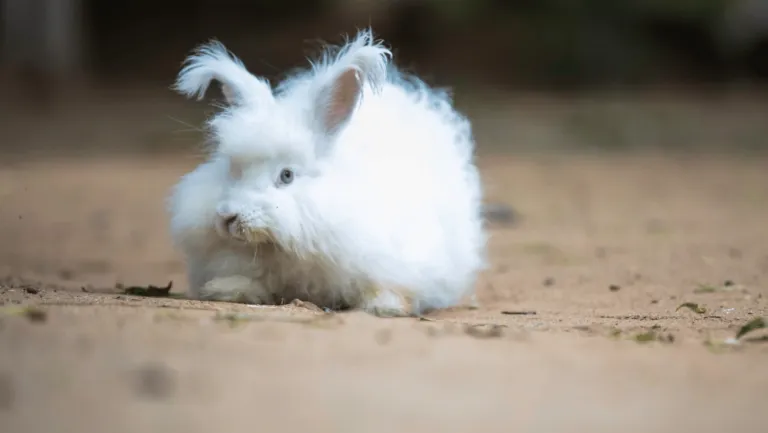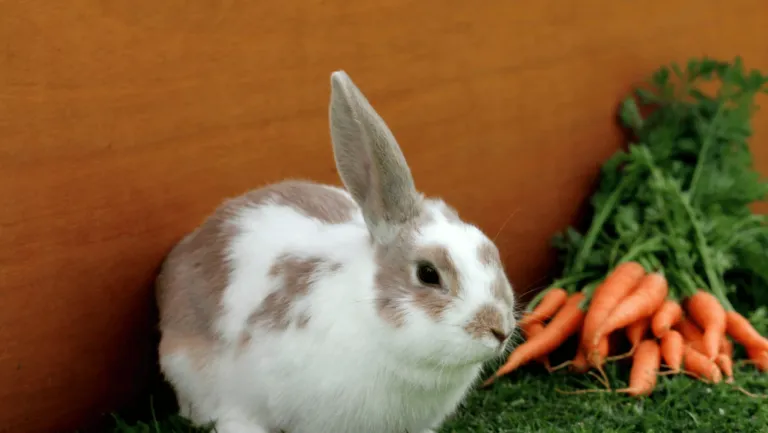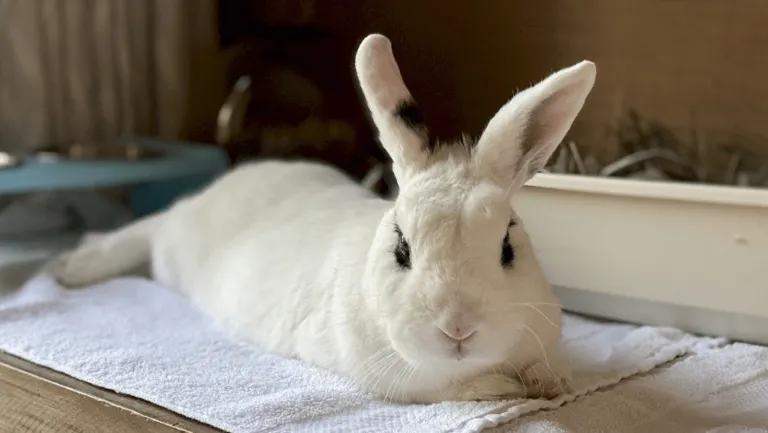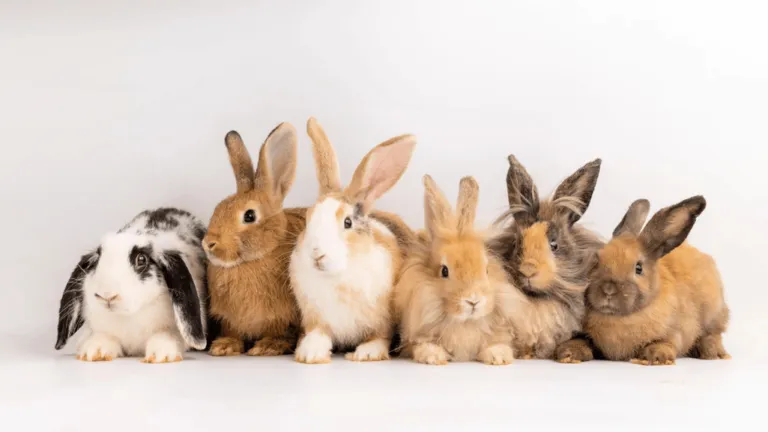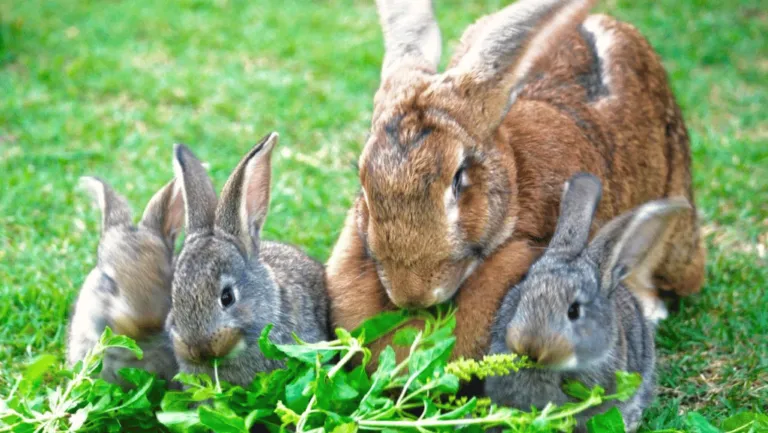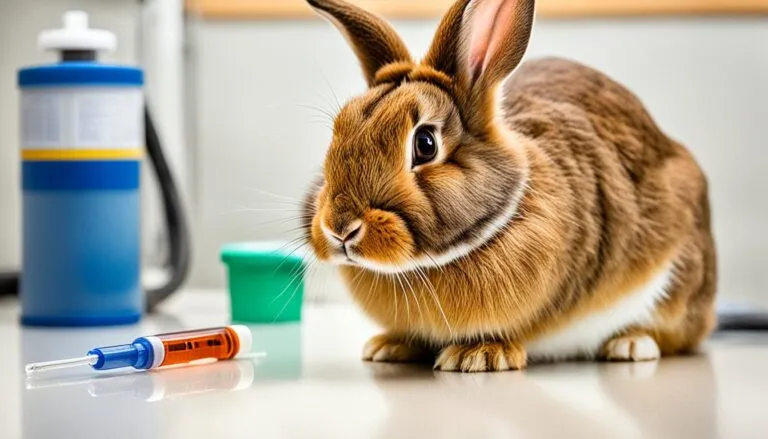The Rhinelander Rabbit is a unique and visually striking breed known for its artistically patterned coat. These rabbits have a wide variety of coat colors and markings, making them a favorite among rabbit enthusiasts. The Rhinelander Rabbit is considered a rare breed, adding to its allure and desirability among collectors and breeders.
Key Takeaways:
- The Rhinelander Rabbit is known for its artistically patterned coat.
- This breed has a wide variety of coat colors and markings.
- The Rhinelander Rabbit is considered a rare breed.
The History of the Rhinelander Rabbit
The Rhinelander Rabbit breed, with its mesmerizing coat pattern, has a fascinating history that dates back to its origins in Germany. Named after the Rhineland region, this breed quickly gained recognition and popularity in the early 20th century.
The distinct markings of the Rhinelander Rabbit’s coat make it a unique and sought-after variety among domestic rabbit enthusiasts. The breed’s coat color and pattern are meticulously regulated by rabbit breed standards, ensuring consistency in appearance.
Today, the Rhinelander Rabbit stands out as one of the most coveted domestic rabbit varieties, captivating owners and breeders alike with its eye-catching and extraordinary coat pattern.
Characteristics and Personality of Rhinelander Rabbits
Rhinelander Rabbits are medium-sized rabbits with a sturdy build and a playful and friendly personality. They are known for their energetic nature and enjoy being active. Their unique coat pattern adds a touch of elegance and beauty to their overall appearance. Rhinelander Rabbits are also known to be relatively easy to care for and make great companions for both experienced and novice rabbit owners.
Energetic and Playful
Rhinelander Rabbits are full of energy and love to play. They enjoy hopping around and exploring their surroundings. Their playful nature makes them a delightful addition to any household, providing endless entertainment for their owners.
Sturdy Build
With a medium-sized and sturdy build, Rhinelander Rabbits are strong and resilient. They have a solid and well-proportioned body structure, which gives them a robust appearance. This physical attribute adds to their charm and makes them stand out among other rabbit breeds.
Unique Coat Pattern
The eye-catching coat pattern of Rhinelander Rabbits sets them apart from other breeds. The distinct bands of color on a white background create a visually appealing and elegant look. Whether the coat pattern is predominantly black, orange, white, or blue, it is sure to captivate the attention of onlookers.
Easy to Care For
Rhinelander Rabbits are known for their relatively low-maintenance care requirements. They adapt well to different environments and can thrive in both indoor and outdoor settings. Their friendly and docile nature makes them easy to handle, groom, and train, making them suitable for rabbit enthusiasts of all experience levels.
Lovely Companions
With their friendly and sociable personality, Rhinelander Rabbits make excellent companions. They bond well with their owners and enjoy spending time interacting and playing with them. Whether you’re looking for a rabbit to join your family or keep you company, a Rhinelander Rabbit can be a loyal and affectionate pet.
Rhinelander Rabbit Genetics and Coat Colors
The coat color and pattern of Rhinelander Rabbits are determined by specific genetic markers. Breeders carefully select and breed rabbits with the desired coat characteristics to maintain the breed standard. This ensures consistency in the appearance of the Rhinelander Rabbit, both in terms of color and pattern.
The variety of coat colors in Rhinelander Rabbits is quite diverse, offering a range of options for enthusiasts and breeders. Some common coat colors include:
- Black
- Orange
- White
- Blue
The coat pattern of the Rhinelander Rabbit is equally captivating. It consists of distinct bands of color on a white background, creating a visually appealing and unique appearance. The precise arrangement and width of these bands contribute to the overall beauty and charm of the breed.
To better understand the inheritance of coat colors and patterns in Rhinelander Rabbits, here’s a simplified genetic diagram:
| Coat Color/Pattern | Genotype | Phenotype |
|---|---|---|
| Black Band | BB | Present |
| Orange Band | OO | Present |
| White Band | ww | Present |
| Blue Band | bb | Present |
By understanding the genetic basis of coat colors and patterns in Rhinelander Rabbits, breeders can make informed decisions to produce offspring with specific coat characteristics. This ensures that the breed standard is upheld and that the captivating beauty of the Rhinelander Rabbit is preserved.
Rhinelander Rabbit Care and Grooming
Proper Rabbit Grooming and Care is essential for keeping Rhinelander Rabbits healthy and ensuring they look their best. Like all rabbit breeds, Rhinelander Rabbits require regular grooming to maintain their coat and overall well-being. Here are some important care and grooming practices to keep in mind:
Diet and Nutrition
Providing a balanced diet is crucial for the health of Rhinelander Rabbits. Their diet should consist of fresh hay, high-quality pellets, and a variety of fresh vegetables. Make sure to provide clean, fresh water at all times. Avoid feeding them sugary or high-starch foods as they can lead to digestive issues.
Exercise and Playtime
Rhinelander Rabbits are active and playful creatures that require regular exercise. Provide them with plenty of space to hop and play, both indoors and outdoors if possible. Encourage exercise through toys, tunnels, and supervised free-roaming time. Remember to rabbit-proof your space to ensure their safety.
Grooming Practices
Rhinelander Rabbits have a dense coat, and regular grooming is necessary to prevent matting and maintain their fur’s beauty. Here are some essential grooming tasks:
- Brushing: Use a soft brush or comb to gently brush your Rhinelander Rabbit’s fur. This helps remove loose hairs, keeps their coat clean, and prevents matting.
- Nail Trimming: Check your rabbit’s nails regularly and trim them if they become too long. Consult a veterinarian or an experienced rabbit owner for guidance on proper nail trimming techniques.
- Ear Cleaning: Clean your rabbit’s ears periodically to prevent ear infections. Use a damp cloth or cotton swab to gently wipe the outer ear, avoiding the ear canal.
Coat Care during Shedding Seasons
Rhinelander Rabbits, like many other rabbit breeds, go through shedding seasons where they lose their old fur and grow new fur. During these periods, it’s essential to pay extra attention to their coat to minimize the risk of matting or wool block. Here are some tips:
- Regular Brushing: Increase the frequency of brushing during shedding seasons to remove loose fur.
- Avoid Hair Ingestion: Provide your Rhinelander Rabbit with safe chew toys and objects to prevent them from ingesting excessive amounts of fur.
- Dietary Supplements: Consult a veterinarian for recommendations on dietary supplements that promote healthy fur growth and reduce shedding.
By following these Rabbit Grooming and Care practices, you can ensure that your Rhinelander Rabbit remains happy, healthy, and looking its best. Remember to always handle your rabbit with care and seek professional advice when needed.
Rare Rabbit Breeds: Rhinelander Rabbit
The Rhinelander Rabbit is a fascinating breed known for its distinctive coat pattern and limited availability. This rare breed belongs to the category of large rabbit breeds, boasting a robust build and impressive size.
While not as commonly seen as some other rabbit breeds, the Rhinelander Rabbit is gaining popularity among rabbit enthusiasts and breeders who appreciate its unique appearance and charming personality.
Rhinelander Rabbit Size Comparison
| Rabbit Breed | Average Weight | Average Length |
|---|---|---|
| Rhinelander Rabbit | 8-11 pounds (3.6-5 kg) | 18-22 inches (45-55 cm) |
| Belgian Hare | 7-9 pounds (3-4 kg) | 17-24 inches (43-61 cm) |
| English Lop | 9-11 pounds (4-5 kg) | 20-24 inches (51-61 cm) |
The Rhinelander Rabbit stands out not only for its rare status but also for its captivating appearance. Its unique coat pattern, combined with its large size, adds to its allure and makes it a cherished addition to any rabbit enthusiast’s collection.
Rhinelander Rabbit as Show Rabbits
The Rhinelander Rabbit breed’s striking coat pattern and adherence to rabbit breed standards make it a popular choice among exhibitors in rabbit shows. These shows provide a platform for showcasing the beauty and unique qualities of Rhinelander Rabbits, while also fostering connections, learning opportunities, and friendly competition among breeders and owners.
Exhibitors participating in rabbit shows often present their Rhinelander Rabbits in different show categories, including color class and breed class. In the color class, judges evaluate the rabbits based on their specific coat colors and patterns, ensuring that they adhere to the standardized criteria. The breed class focuses on assessing the overall conformation and qualities that make the Rhinelander Rabbit a distinguished breed.
Featuring Rhinelander Rabbits in various show categories allows these unique rabbits to be appreciated by both enthusiasts and judges who understand and appreciate the breed’s distinct attributes. The beauty and elegance of the Rhinelander Rabbit’s coat pattern, combined with its adherence to breed standards, often result in accolades and recognition for both the rabbits and their owners.
Rhinelander Rabbit Show Categories
Here is a table highlighting the main show categories for Rhinelander Rabbits:
| Show Category | Description |
|---|---|
| Color Class | Evaluation based on coat colors and patterns |
| Breed Class | Assessment of overall breed conformation and characteristics |
The Importance of Preserving Rare Rabbit Breeds
Preserving rare rabbit breeds, such as the Rhinelander Rabbit, is crucial for maintaining genetic diversity within domestic rabbit populations. These breeds possess unique traits and characteristics that contribute to the overall health and vitality of the breed. By safeguarding these rare rabbits, we can prevent their extinction and foster an appreciation for the diverse species of rabbits.
The Benefits of Preserving Rare Rabbit Breeds
Preserving rare rabbit breeds not only ensures the conservation of their distinct features but also offers several advantages to the rabbit community:
- Genetic Diversity: Rare rabbit breeds help maintain a diverse gene pool in domestic rabbit populations. This diversity is essential for breeders to introduce new traits, improve overall health, and reduce the risk of genetic disorders.
- Breeding Potential: Rare breeds often possess unique traits that can be selectively bred to enhance desired characteristics in domestic rabbit varieties. These traits add variety and appeal to the rabbit breeding community.
- Historical Significance: Preserving rare rabbit breeds allows us to honor and remember their historical importance. Each breed has a unique story and connection to our past, reflecting the cultural and agricultural practices of earlier times.
- Education and Research: Rare breeds offer educational opportunities for studying genetic inheritance, coat color variations, and breed standards. By conserving and documenting these breeds, we ensure future generations can learn from them.
Table: Rare Rabbit Breeds and Their Characteristics
| Breed | Size | Coat Type | Distinctive Features |
|---|---|---|---|
| Rhinelander Rabbit | Medium to Large | Medium-length, dense fur with unique pattern | Distinct and eye-catching coat pattern |
| English Spot | Medium | Short, sleek coat with spots | Spotted coat pattern with symmetrical markings |
| Belgian Hare | Large | Short, dense fur | Slender body shape, resembling a hare |
Preserving rare rabbit breeds ensures the continued existence and appreciation of these unique and treasured animals. It’s our responsibility to protect and cherish these breeds for their beauty, genetic diversity, historical significance, and educational value.
Conclusion
The Rhinelander Rabbit is truly a breed that stands out among the rest. With its visually stunning artistically patterned coat and playful personality, it has become a favorite among rabbit enthusiasts. The unique coat colors and distinct markings of the Rhinelander Rabbit make it a rare breed worth cherishing.
As responsible rabbit owners, it is important to understand the specific care requirements of Rhinelander Rabbits. Regular grooming, a proper diet, and a clean living environment are essential for their health and well-being. Their playful nature and friendly personality also make them a wonderful choice for both experienced and novice rabbit owners.
Preserving rare breeds, such as the Rhinelander Rabbit, is crucial for maintaining the diversity and vitality of the domestic rabbit population. By appreciating and supporting these rare breeds, we contribute to the ongoing preservation of their unique traits and characteristics. Let us continue to celebrate and protect the beauty of the Rhinelander Rabbit, alongside other rare breeds like the Dwarf Rabbit Breeds, for future generations to enjoy.
Frequently Asked Questions
What is a Rhinelander Rabbit?
The Rhinelander Rabbit is a unique and visually striking breed known for its artistically patterned coat.
Where did the Rhinelander Rabbit originate?
The Rhinelander Rabbit breed originated in Germany and was named after the Rhineland region.
Why are Rhinelander Rabbits considered rare?
Rhinelander Rabbits are considered rare due to their distinctive coat pattern and limited availability.
What are the characteristics of Rhinelander Rabbits?
Rhinelander Rabbits are medium-sized with a sturdy build and a playful and friendly personality.
What are the coat colors and patterns of Rhinelander Rabbits?
The coat colors in Rhinelander Rabbits include black, orange, white, and blue, with distinct bands of color on a white background.
How should I care for a Rhinelander Rabbit’s coat?
Regular grooming, including brushing and preventing matting during shedding seasons, is essential for Rhinelander Rabbits.
Why is it important to preserve rare rabbit breeds like the Rhinelander Rabbit?
Preserving rare rabbit breeds helps maintain genetic diversity and prevents their extinction.
Can Rhinelander Rabbits compete in rabbit shows?
Yes, Rhinelander Rabbits are popular choices for rabbit shows due to their striking coat pattern.
What are the benefits of owning a Rhinelander Rabbit?
Rhinelander Rabbits are visually stunning, playful companions that are relatively easy to care for.






